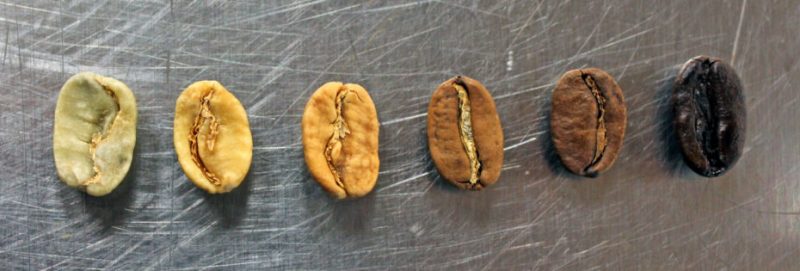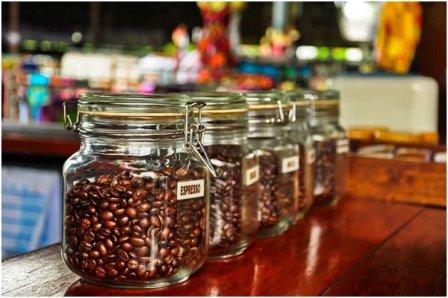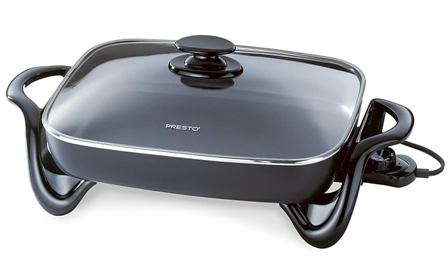
Most of the people who like to taste fresh coffee prefer to roast coffee at home. The coffee is considered to be optimal if it is brewed 2-3 days after roasting. The aroma and taste are maintained in freshly roasted coffee, which fades with a longer time span. People do prefer to buy roasted coffee as it saves time, but trust me, there is a lot of difference when you roast coffee beans at home.
Once you have the opportunity to roast coffee of your own, you may never buy from the grocery stores again! Roasted coffee will always be at its most optimal taste the sooner you consume it after roasting. For this reason, you should definitely consider the thought of roasting coffee at home. The potency and taste are unlike anything that you can buy in the stores. Imagine the pride that you will feel just sipping away on a cup of custom-made liquid gold that you’ve prepared yourself, from start to finish!
Prepping The Beans For Roasting
Dry the Beans Out: This step is so important, especially if you do not plan to roast right away. Leaving any trace of moisture will invite mold, in which the beans would most certainly have to be totally discarded.
Spread the beans onto a large flat surface such as a cookie sheet, or any large flat, clean surface. Be sure to have a large enough surface so that the beans are not crowded amongst each other, as this will compromise the drying process. Depending on the climate and access to direct sunlight, the drying process can take anywhere from a few, to several days.
It’s important to keep the beans protected throughout the entire process, especially throughout the drying period. You want to pick a spot that is not accessible to any sort of pests such as rodents, birds, bugs, squirrels, etc.
Choosing The Method Of Roasting Coffee
There are several different methods that you can use to roast your coffee beans. There are specific roasting appliances made for just that reason. Some of them come equipped with things such as smoke reduction, timers, temperature control, airflow regulation, and chaff collection.
However, you can also utilize items that are already present in your home. These D.I.Y options are more accessible as well as more affordable. Coffee beans can be roasted using a skillet, stovetop popcorn popper, a cookie sheet in your oven, and even an electric popcorn popper.
Stovetop Popcorn Popper
Set your stovetop temperature on a low heat and place your beans the popcorn popper and continuously turn the hand crank, as it will provide the best results for even roasting and also prevent burning. Roast until you reach the desired doneness. Do keep a thermometer in reach to ensure that the temperature remains around 350°F but does not drop below 300°F. Transfer to colander when done to shake off the excess skin before cooling.
Skillet Roasting
Turn your burner to medium. Preheat your skillet to around 500°F. Place them in an even layer and continuously stir with a whisk or a wooden spoon until desired doneness. Transfer to colander for a good shake to remove excess skin and then start the cooling process.
Cookie Sheet
Ideally your oven should be between 470°F and 500°F. For the oven method, be sure to have a clear visual such as the oven window, in order to monitor the process. Spread your coffee onto the cookie sheet or baking pan and place in the oven. Give them an occasional stir with a wooden spoon for even roasting. When you remove them from the oven, again, shake off the excess skin and transfer to a separate, cool cookie sheet for drying.
Roasting is the first crucial step when preparing the coffee beans for your favorite drink. It is the process that transforms the Green Beans to bring them a step closer to brewing format. It let’s them expand and change the color, taste, fragrance and darkness. In order to get the best taste of coffee, they should be roasted at around the time of consumption. It ensures that the flavor and freshness does not fades away after roasting.
Coffee Roast Chart

Roasting is not a very typical process but requires some understanding of the various grades. These are classified according to the degree of heat applied and the time spent in roasting. The preferred method of brewing and the kind of strength you like decides your Roasting type. Here are some of the reachable goals or the various levels of roasting.

Green Beans: These beans have a shelf life of almost two years from the date of packing. These are acidic in nature and lack taste.
Drying Phase (165 °C): The first phase is the drying phase where moisture content is evaporates. Beans emit a grassy smell and turn into lighter yellowish color.
Cinnamon Roast (196 °C): This is the first roast level which is adequate for drinking. We identify it by hearing the immediate first crack. Beans turn into a light brown color, grain like character and are acidic in nature
New England Roast (205 °C): Moderate Brown Color and complex acidity levels indicating specialty roasting level by few commercial roasters.
American Roast (210 °C): Medium Brown Beans maintaining the origin character. This is again a special Roast Level which is not commonly available.
City Roast (219 °C): This is the first level that in use most commonly. And it is available with almost all the coffee roasters. It is good for tasting the actual character of coffee beans. This brew is used by most people using the drip brewing method.
Full City Roast (225 °C): Medium Dark Brown in color, oil sheen on beans, and at the verge of the second crack are the few characters of this roasting level. Beans also start to expand their size. This level is in use at a wider span. After City Roast, this level is in great consumption.
Vienna Roast (230 °C): The beans turn into moderate dark brown in color and the origin characteristics start getting fading away. The sugar turns into caramel flavor, acidity escapes and the taste turn into a bittersweet. The surface becomes a slight oily at this level.
Italian Roast (240 °C): Dark Brown Oily Beans with all the origin character diminished. The second crack comes to an end at this level and smoke starts coming out. This roast level is bitter in taste. Strong coffee lovers mostly like this kind of level.
French Roast (245 °C):The last level of roasting where the smell will count as a bit burnt and the bean body will emit a shiny dark tone. Acidity is all gone and just bitterness survives here.Not preferred by many of the coffee lovers.
After this level, we are just burning the coffee beans and nothing else. If you already know this, it’s great else you have learned a good lesson if you really love coffee. My personal suggestion is to read this article 3-4 times, and it will set inside your mind for lifetime.
How To Roast Coffee Beans

Yellowing
During the first few minutes of roasting, the beans are still a greenish color. Then as the process goes on, they start to transform into a yellowish color and give off a grassy smell. It is normal to for the beans to give off steam at this point in the process, as their internal water content begins to dissipate.
First Crack
You will soon hear what is referred to as the first crack, which happens as the roasting begins to occur. The steam will become fragrant and sugars begin to caramelize. The last bit of bound up water will escape in this process. The structure of the coffee bean breaks down and emit oils.
First Roasted Stage
Anytime after the first crack, the roasting is considered done, so any further roasting from this point on will be dependent upon your personal preference. You can stop the roasting process whenever you reach your desired level. This stage is what is referred to as City Roast.
Caramelization
The caramelization process continues. The oil migrates to the surface and the bean will increase in size as the roasting progresses. This stage is referred to a City+ roast. When you are just at the point before the second cracking occurs, that stage is called a Full City roast.
Second Crack
At this point, the second crack will occur any minute now. It’s often louder than the first. This stage is known as the Vienna Roast. Popping will continue to occur during the second crack. If you choose to roast all the way through the second crack, small pieces of the bean may break off and shoot away. If this happens, do not be concerned as it is normal during this stage.
Darkening Roast
As the roasting beans become darker, the smoke may give off a pungent smell as the sugars burn completely. The structure of the bean breaks down more and more as time progresses. This stage is referred to as a French Roast. Keep in mind that although the color is dark and rich at this stage, the caffeine content is not as high as the other stages. Monitor this stage very carefully and do not leave the beans unattended, because this is the point right before burning and all of your hard work would have been in vain.
Storage After Roasting Coffee
Now that you have successfully roasted your first batch of coffee, it is time to cool off and store your beans. Be sure to cool them off completely. Darker roasts may require several hours of cooling off so that the gasses may dissipate before storing them. It’s best to cool them off on a flat surface such as a cookie sheet. Spread them out so that there’s even airflow between them. Occasionally rotate the beans during the cooling-off process, just to help them along.

Also, be sure to remove any outer skin fragments that the beans shed during the roasting process by giving them a good shake in a colander, before storing them. Store your coffee beans in an airtight container. Glass is usually the best choice, and mason jars work wonders as they have an airtight seal.
Proper Way To Store Coffee Beans
The beans in itself, prior to roasting, are rather not enjoyable. In its raw stage, the taste is bitter and extremely acidic. They are green in color, often smell like grass, are soft, and sometimes squishy. However, if you’re looking to store them for any length of time prior to roasting, this is the stage that you want to keep them in; after they have been properly dried of course.
Airtight Container : An airtight container not only protects them from moisture, it also inhibits any impurities from entering into the container.
Darkness: Coffee prefers darkness, so light exposure of any kind can be detrimental to its longevity and potency.
Store Away from Heat Sources: Heat really plays a major role in destroying the coffee beans. When exposed to heat the beans lose a great deal of flavor, it also compromises the freshness, and turns the them stale.
How Not To Store Coffee Beans
Absolutely, do not store your coffee beans in the refrigerator or freezer. Either option is likely to attract moisture and we know by now that moisture is one of your worst enemies. Also, if kept in the refrigerator, your coffee can start to take up the smell and flavors of the items around them.
Heat Sources are not just found by way of a warm room. Avoid keeping the container sitting in or near a window, where the sun can beat down on it. Also avoid spaces such as cabinets directly above the stove, shelving near any heat registers, or even appliances that often emit waves of heat while in operation.
In order to help preserve its potency, and freshness; I recommend that you do not grind more than a week’s worth batch at a time.
FAQs
What does coffee roasting means?
Roasting coffee beans is actually the processing done to prepare the green ones for their final use. They are roasted to transform them into characteristic flavor of actual coffee which we drink.
Should I roast my own coffee?
If possible, Yes! This gives you full control over the coffee brewing process and helps you reach the optimum taste. Additionally, you really know the date of roasting which gives you proper interval to consume the beans.
Which coffee is stronger, Light or Dark roast?
When roasting, the caffeine level reduces. So the light roast if compared to dark roast bean will have more caffeine. But however, the weight also reduces on roasting, so when we weigh these beans, the same weight of light roast will have lesser caffeine than those in dark roast.
Is Coffee Good or Bad for Health?
This is not a one side answer. Anything over the limits causes trouble and so is coffee. If you consume it in heavy quantity, the caffeine can have adverse effect whereas, if done in limits, it will have positives more.
Wrapping Up
VOILA! GRAB A CUP AND ENJOY
Now that you have all of the steps, play around with different stages of roasting. It might even be a good idea to try each stage from light to dark, just to see what you prefer the most. I guarantee that once you start roasting your own coffee, you will never return to store bought pre-roasted coffee again!





